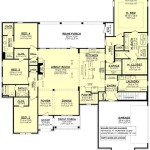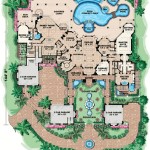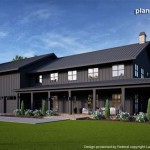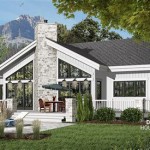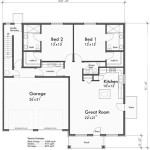Simple bat house plans offer a straightforward and effective way to provide shelter for these beneficial creatures. Bat houses are enclosed structures designed to mimic the natural roosting sites of bats, such as caves and hollow trees.
As valuable insect-eaters, bats play a crucial role in controlling mosquito populations and reducing the incidence of insect-borne diseases. Providing them with artificial roosting sites can support their conservation and enhance the ecological balance in your area.
In the following sections, we will explore the key considerations for designing and constructing simple bat houses, including materials selection, site selection, and installation techniques. Whether you are a homeowner looking to attract bats to your property or an ecologist seeking to support bat conservation efforts, this article will provide you with the essential information and guidance.
When designing and constructing simple bat houses, it is essential to consider the following key points:
- Proper Dimensions
- Suitable Materials
- Correct Orientation
- Adequate Ventilation
- Optimal Height
- Clearance from Obstacles
- Protection from Elements
- Avoidance of Chemicals
- Regular Maintenance
By carefully considering these factors, you can create an effective bat house that will provide a safe and comfortable roosting site for these beneficial creatures.
Proper Dimensions
The proper dimensions of a bat house are crucial to ensure that it provides a suitable roosting environment for bats. The following points should be considered:
- Height: The height of the bat house should be at least 24 inches (61 cm) to provide enough space for bats to roost comfortably. A taller bat house may be more attractive to bats, but it is important to ensure that it is not too tall to be easily accessible for maintenance.
- Width: The width of the bat house should be at least 14 inches (36 cm) to provide enough space for multiple bats to roost side-by-side. A wider bat house can accommodate more bats, but it should not be so wide that it becomes too difficult for bats to enter and exit.
- Depth: The depth of the bat house should be at least 3 inches (7.6 cm) to provide enough space for bats to hang upside down and spread their wings. A deeper bat house may provide more protection from the elements, but it is important to ensure that it is not too deep to prevent bats from easily reaching the entrance.
- Entrance: The size and shape of the entrance is critical for allowing bats to enter and exit the bat house easily. The entrance should be at least 3/4 inch (1.9 cm) wide and 2 inches (5 cm) tall. A narrower or smaller entrance may make it difficult for bats to access the bat house, while a larger entrance may allow predators to enter.
By following these guidelines, you can ensure that your bat house has the proper dimensions to attract and accommodate bats.
Suitable Materials
The choice of materials for constructing a bat house is crucial to ensure its durability, effectiveness, and safety for bats. The following materials are commonly used and recommended for building bat houses:
Wood: Wood is a popular and suitable material for bat houses due to its natural insulation properties and ability to absorb moisture. Cedar and redwood are commonly used types of wood for bat houses as they are naturally resistant to rot and decay. However, it is important to ensure that the wood used is untreated and free of any chemicals or stains, as these can be harmful to bats.
Plastic: Plastic is another commonly used material for bat houses, particularly recycled plastic. Plastic bat houses are durable, weather-resistant, and easy to clean and maintain. However, it is important to choose plastic materials that are specifically designed for outdoor use and that can withstand extreme temperatures without releasing harmful chemicals.
Other Materials: In addition to wood and plastic, other materials such as metal and concrete have also been used to construct bat houses. However, these materials may not be as suitable as wood or plastic due to their poor insulation properties and potential for condensation.
Regardless of the material chosen, it is important to ensure that the bat house is well-constructed and properly sealed to prevent moisture penetration and drafts. The use of high-quality materials and proper construction techniques will help ensure the longevity and effectiveness of the bat house.
Correct Orientation
The correct orientation of a bat house is crucial to ensure that it receives sufficient sunlight and provides a suitable temperature range for roosting bats. The following points should be considered:
Direction: Bat houses should be oriented to face south or southeast to receive maximum sunlight during the day. This is important for maintaining a warm and stable temperature inside the bat house, which is essential for attracting and retaining bats.
Sun Exposure: The bat house should be placed in an area that receives at least 6 hours of direct sunlight per day. This will help to warm the bat house and create a suitable roosting environment for bats.
Shade: While the bat house should receive sufficient sunlight, it is also important to provide some shade, especially during the hottest part of the day. This can be achieved by placing the bat house under a tree or by installing a shade structure above the bat house.
Wind Protection: The bat house should be placed in an area that is protected from strong winds. This will help to prevent the bat house from swaying or being damaged, and it will also create a more comfortable environment for bats.
By following these guidelines, you can ensure that your bat house is correctly oriented to provide a suitable roosting environment for bats.
Adequate Ventilation
Adequate ventilation is crucial for maintaining a healthy and comfortable environment inside the bat house. Proper ventilation allows for the exchange of air, which helps to remove moisture, reduce odors, and prevent the buildup of harmful gases.
To ensure adequate ventilation, the bat house should have several ventilation holes. These holes should be located near the top of the bat house, on opposite sides, to allow for cross-ventilation. The holes should be at least 1/2 inch (1.3 cm) in diameter and should be covered with a mesh screen to prevent bats from escaping.
In addition to the ventilation holes, the bat house should also have a small gap between the bottom of the house and the mounting surface. This gap will allow for air to circulate around the bottom of the house and help to prevent moisture buildup.
Proper ventilation is essential for the health and well-being of bats. By ensuring that your bat house has adequate ventilation, you can create a more attractive and suitable roosting environment for these beneficial creatures.
Benefits of Adequate Ventilation:
- Prevents Moisture Buildup: Adequate ventilation helps to remove moisture from the bat house, which can prevent the growth of mold and mildew. Moisture can also make the bat house uncomfortable for bats and can lead to health problems.
- Reduces Odors: Ventilation helps to reduce odors in the bat house. Bats can produce a strong odor, which can be unpleasant for humans and can deter bats from using the house.
- Prevents Buildup of Harmful Gases: Ventilation helps to prevent the buildup of harmful gases, such as ammonia and carbon dioxide, which can be harmful to bats.
Optimal Height
The optimal height for a bat house is between 10 and 20 feet (3-6 meters) above the ground. This height provides several benefits for bats:
- Protection from Predators: Placing the bat house at a height of 10 feet or more helps to protect bats from predators such as snakes, cats, and raccoons. These predators are less likely to climb to such heights to reach the bat house.
- Access to Flight Path: Bats need to be able to easily enter and exit the bat house, and placing it at a height of 10-20 feet provides a clear flight path for bats. This height allows bats to approach and land on the bat house without obstructions.
- Sun Exposure and Ventilation: Placing the bat house at a height of 10-20 feet ensures that it receives sufficient sunlight to maintain a warm temperature inside the house. Additionally, this height allows for proper ventilation and air circulation, which is important for preventing moisture buildup and creating a healthy environment for bats.
- Reduced Disturbance: Placing the bat house at a height of 10-20 feet helps to reduce disturbance from humans and other animals. Bats are sensitive to noise and activity, and placing the bat house at a higher elevation can help to minimize these disturbances.
It is important to note that the optimal height for a bat house can vary depending on the specific location and environment. For example, in areas with strong winds, it may be necessary to place the bat house at a lower height to provide protection from the wind. It is always best to consult with a local bat expert or wildlife organization to determine the best height for a bat house in your area.
Clearance from Obstacles
When choosing a location for your bat house, it is important to ensure that there are no obstacles within a 2-foot radius of the entrance. Obstacles can include branches, wires, or other structures that could interfere with bats entering or exiting the bat house.
- Branches: Tree branches can be a hazard to bats, as they can obstruct the entrance to the bat house or even trap bats inside. When choosing a location for your bat house, make sure that there are no branches within 2 feet of the entrance.
- Wires: Wires can also be a hazard to bats, as they can become entangled around their wings or legs. When choosing a location for your bat house, make sure that there are no wires within 2 feet of the entrance.
- Other Structures: Other structures, such as buildings or fences, can also be a hazard to bats. Make sure that there are no structures within 2 feet of the entrance to the bat house that could obstruct bats or pose a safety risk.
- Clear Flight Path: Bats need to be able to approach the bat house and land on the entrance without any obstructions. Make sure that there is a clear flight path to the entrance of the bat house, free of any obstacles.
By ensuring that there are no obstacles within a 2-foot radius of the entrance to your bat house, you can help to ensure that bats can safely enter and exit the house.
Protection from Elements
Bat houses should be designed and constructed to protect bats from the elements, including rain, wind, and extreme temperatures.
Rain Protection: Bat houses should be designed to prevent rain from entering the house. This can be achieved by using a sloped roof and by ensuring that the entrance is facing downward. Additionally, the bat house should be placed in an area that is protected from the wind, such as under a tree or eave of a building.
Wind Protection: Bat houses should be designed to withstand strong winds. This can be achieved by using sturdy materials and by ensuring that the bat house is securely attached to a post or other structure. Additionally, the bat house should be placed in an area that is protected from the wind, such as under a tree or eave of a building.
Extreme Temperatures: Bat houses should be designed to provide bats with a comfortable temperature range. This can be achieved by using materials that insulate the bat house and by providing ventilation to prevent overheating. Additionally, the bat house should be placed in an area that receives sunlight during the day and is protected from the wind.
By following these guidelines, you can design and construct a bat house that will provide bats with a safe and comfortable place to roost.
Avoidance of Chemicals
It is important to avoid using chemicals when constructing or treating bat houses, as chemicals can be harmful to bats. Chemicals can leach into the environment and contaminate the bats’ food and water sources. Additionally, bats can absorb chemicals through their skin and respiratory system.
- Treated Wood: Avoid using treated wood, such as pressure-treated wood, to build bat houses. Treated wood contains chemicals that can be harmful to bats.
- Paints and Stains: Do not paint or stain bat houses. Paints and stains can release chemicals that are harmful to bats.
- Pesticides and Insecticides: Do not use pesticides or insecticides around bat houses. Pesticides and insecticides can kill bats and contaminate their food and water sources.
- Cleaning Chemicals: Do not use harsh cleaning chemicals to clean bat houses. Harsh cleaning chemicals can damage the bat house and leave behind residues that are harmful to bats.
By avoiding the use of chemicals, you can help to protect bats and create a safe and healthy environment for them to roost.
Regular Maintenance
Regular maintenance is essential to ensure that your bat house remains in good condition and continues to provide a safe and suitable roosting site for bats. The following maintenance tasks should be performed on a regular basis:
- Inspection: Bat houses should be inspected at least once a year for any damage or deterioration. Check for cracks, holes, or other damage to the structure of the bat house. Also, check for any signs of moisture or mold growth inside the bat house.
- Cleaning: Bat houses should be cleaned once a year to remove any accumulated guano (bat droppings). Guano can build up over time and can create an unsanitary environment for bats. To clean the bat house, remove all of the guano and wash the inside of the house with a mild soap and water solution. Rinse the bat house thoroughly and allow it to dry completely before replacing it.
- Repairs: Any damage to the bat house should be repaired as soon as possible to prevent further damage and to ensure the safety of the bats. Repairs can be made using the same materials that were used to construct the bat house.
- Relocation: In some cases, it may be necessary to relocate the bat house if it is no longer in a suitable location. For example, if the bat house is no longer receiving enough sunlight or if it is being disturbed by humans or animals, it may need to be moved to a new location.
By following these regular maintenance tasks, you can help to ensure that your bat house remains in good condition and continues to provide a safe and suitable roosting site for bats.










Related Posts

